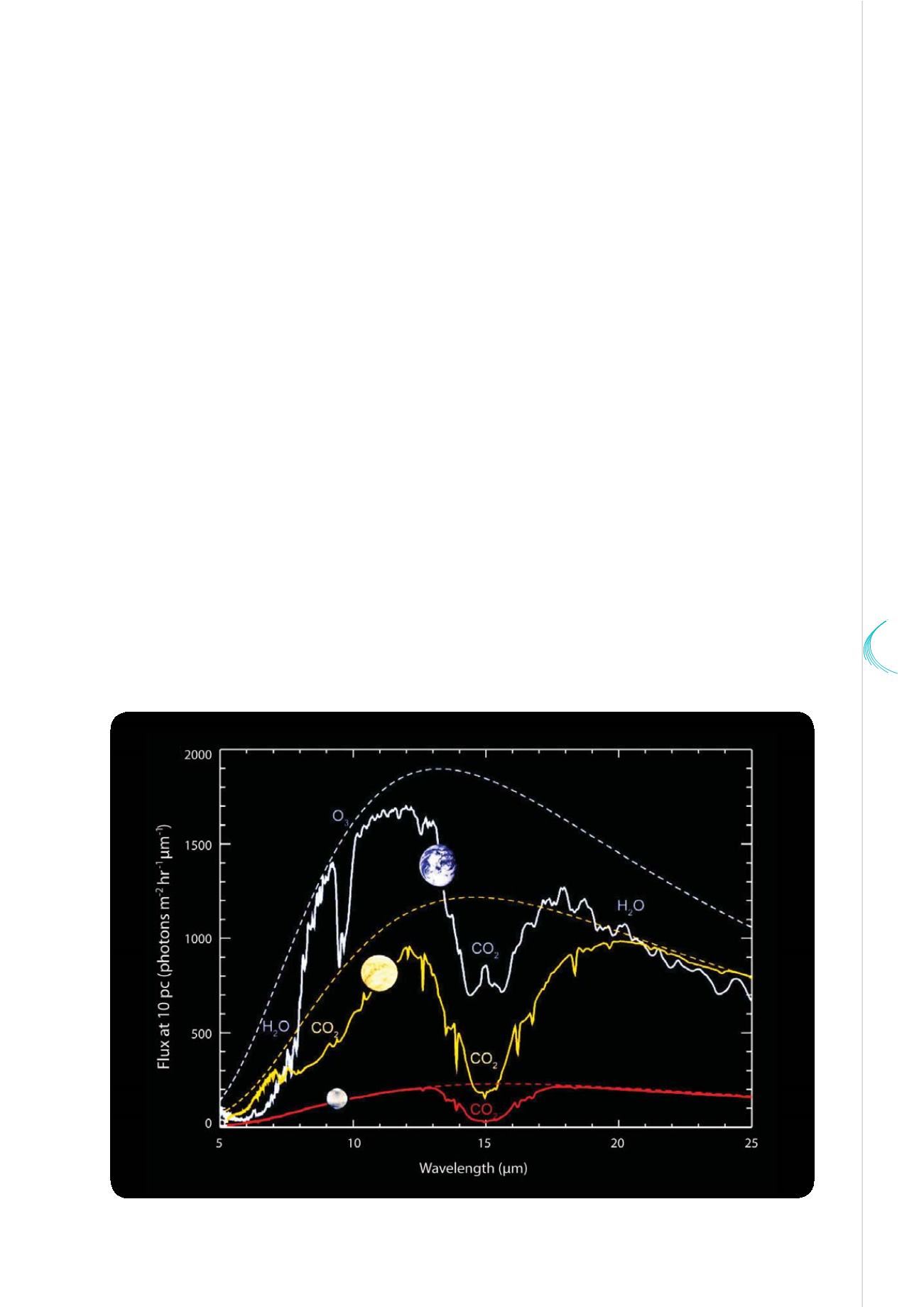

350
YEARS
OF
SCIENCE
63
is our ability to apprehend the variety of atmospheres on the exoplanets, imagine other possibilities and
formulate, on the sole basis of theoretical considerations and with the help of simulations and laboratory
experiments, original and coherent scenarios on the formation and development of life, in conditions that
differ from those of Earth.
A grain of sand in a very wide Universe
The explosion of knowledge that occured during the 350 last years, the emergence of various disciplines
now called physics, geophysics, chemistry, life sciences and, more recently, computer science have
brought about a sharply new perspective on Earth and the solar system, that are regarded now as tiny
pieces in a very wide Universe. The question whether other worlds exist is now raised in scientific terms.
The first extrasolar planet systems were only discovered recently, in the 1990s. After 20 years of study, we
observe there is a wide variety of exoplanets and we may have only caught glimpses yet of such variety.
The hunt for exoplanets is not over: we have not explored all the diversity of systems – we do not know,
for instance, if systems analogous to the solar system exist and only the close neighbourhood of the sun
has been investigated. The atmospheres of the exoplanets also remain widely unexplored and their study,
will probably be the only way to detect signatures of life. However, in the present state of knowledge, to
establish the probable existence of life on another planet appears to be a very long term objective.
The solar system, in this context, is a valuable and indispensable element of comparison, even though
we must remember it is but one case, and not necessarily a representative one, among a population of
systems whose diversity appears greater every day.
© Franck Selsis and Giovanna Tinetti, Darwin proposal, 2007
The spectrum of the Earth differs from that of the two other telluric planets Mars and Venus, in particular due to
the presence of oxygen that derived from life on Earth. The study of the atmospheres of exoplanets will probably
be the only way to detect signatures of life.


















